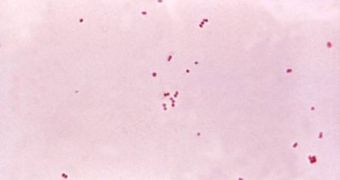After centuries in which meningitis was free to wreak havoc among small children and the elderly, researchers from the University of California in San Diego (UCSD) School of Medicine and Skaggs School of Pharmacy and Pharmaceutical Sciences have finally managed to discover how the bacteria causing the disease move from the blood into the brain. Apparently, a protein found on the surface of a common bacterial pathogen is the main factor that allows for the infection to move to the brain, ScienceDaily informs. Details of the work are published in the latest online issue of the Journal of Experimental Medicine.
The blood-brain barrier is exactly what its name hints at. It is the last line of the defense that the organism puts between all the pathogens and other perils circulating in the human bloodstream and the brain. Most harmful bacteria and viruses stop there, but some have developed ways of getting past it, such as the pneumococcus, which causes meningitis. The new work could put an end to this and lead to the creation of new treatments and prevention methods to protect those most at risk, including newborns and seniors.
“Streptococcus pneumoniae, commonly known as pneumococcus, is responsible for half the cases of bacterial meningitis in humans. As many as 30 percent of patients can die from this rapidly progressing infection, while half of survivors may be left with permanent neurological problems including deafness, seizures, intellectual deficits or motor disabilities,” UCSD School of Medicine Professor of Pediatrics and Pharmacy Victor Nizet, MD, also the senior author of the new paper, explains.
In its investigations, the science team focused its efforts on analyzing the prominently featured NanA protein, which all strains of pneumococcus produce in large amounts and deposit on their surface. Through extensive genetic manipulations, the experts were able to grow bacteria populations that did not feature the protein. When set against the blood-brain barrier – which is entirely made out of a single layer of highly specialized microvascular endothelial cells – the bacteria proved unable to pass through it. The same results held true with only truncated versions of the protein.
“Our tissue culture studies showed that the NanA protein was both necessary and sufficient for bacterial penetration of the blood brain barrier endothelial cells. After infecting mice intravenously, we also found that far fewer NanA-deficient bacteria left the bloodstream and entered the brain, in comparison to mice infected with the normal pneumococcus,” the lead author of the study, Satoshi Uchiyama, MD, who is a postdoctoral fellow in Nizet's laboratory, adds.

 14 DAY TRIAL //
14 DAY TRIAL //